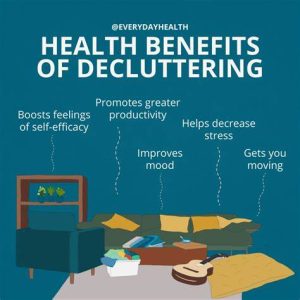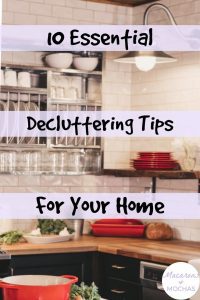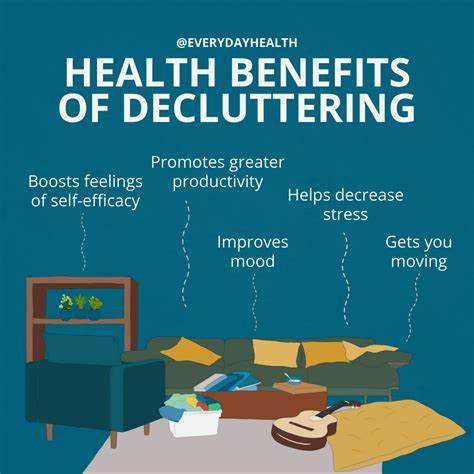Life can be hectic, and our living spaces often bear the brunt of it, becoming cluttered and chaotic. But the good news is that decluttering can be a transformative experience, leading to a more organized and peaceful home. In this comprehensive guide, we’ll explore 30 things you need to throw out to achieve a calmer home. These items not only contribute to clutter but also can be a source of stress. We’ll provide you with practical tips and insights on how to declutter effectively and create a more serene living environment.
The Benefits of Decluttering
Before we dive into the list of items to throw out, let’s highlight the numerous benefits of decluttering.
1. Stress Reduction
A cluttered space can lead to feelings of stress and overwhelm. Decluttering helps reduce this stress and creates a sense of calm.
2. Improved Focus
A clutter-free environment allows you to concentrate better, making you more productive and efficient.
3. Enhanced Well-being
A tidy space can positively impact your mental and emotional well-being, promoting a sense of happiness and contentment.
4. More Space
By decluttering, you’ll find that you have more physical space to move around and enjoy your home.

The 30 Items to Throw Out
1. Expired pantry items: Check your pantry for expired food, spices, and condiments.
2. Old magazines and newspapers: Recycle or donate old reading materials.
3. Duplicate kitchen utensils: Keep only what you use and need.
4. Worn-out linens and towels: Replace them with fresh, quality linens.
5. Broken or mismatched dishes: Reorganize your kitchenware.
6. Unused gadgets: Declutter your kitchen by getting rid of appliances you don’t use.
7. Scratched or old cookware: Invest in quality cookware.
8. Unused clothes: Donate or sell clothing you no longer wear.
9. Shoes that hurt your feet: Keep only comfortable footwear.
10. Unworn accessories: Donate or sell jewelry and accessories you don’t use.
11. Outdated electronics: Recycle or donate old devices.
12. Cables and chargers for unknown devices: Declutter your tech collection.
13. Broken or mismatched furniture: Refresh your living space with quality furniture.
14. Old makeup and skincare products: Dispose of expired cosmetics.
15. Expired medications: Safely dispose of old medications.
16. Receipts and paperwork: Digitize important documents and dispose of unnecessary paperwork.
17. Excessive cleaning supplies: Keep only what you need.
18. Old, worn-out pillows and cushions: Replace them with fresh ones.
19. Unused or broken exercise equipment: Create a functional workout space.
20. Outdated decor: Refresh your home with contemporary decor.
21. Unused or broken toys: Donate or discard children’s toys they no longer play with.
22. Damaged or unused luggage: Keep only what you use for travel.
23. Unused books: Donate or sell books you won’t read again.
24. Unread magazines: Cancel subscriptions and recycle unread issues.
25. Excess hangers: Keep only what you need in your closet.
26. Old, expired, or dried-up art supplies: Declutter your creative space.
27. Broken or unused garden tools: Keep only what you need for gardening.
28. Damaged or unused sports equipment: Create space for activities you love.
29. Outdated or broken holiday decorations: Simplify your holiday storage.
30. Excessive knick-knacks: Simplify your decor by reducing clutter.
By decluttering these items, you’ll pave the way for a more organized and peaceful living space.
Decluttering Tips
To make the process of decluttering more effective and manageable, consider these tips:
- Set specific goals: Determine what you want to achieve through decluttering. Whether it’s a tidy closet or a streamlined kitchen, clear objectives will keep you motivated.
- Tackle one area at a time: Instead of overwhelming yourself by trying to declutter your entire home in one go, focus on one room or area at a time.
- Use the “keep, donate, toss” system: As you go through your items, categorize them into what you want to keep, donate, or throw away. Be honest with yourself about what you truly need and use.
- Digitize when possible: Scan important documents and photos to reduce physical clutter. Store them in the cloud or on digital storage devices.
- Create a regular decluttering schedule: Make decluttering a routine, whether it’s a monthly, quarterly, or yearly process. Regular maintenance ensures your home remains clutter-free.
- Consider professional help: If decluttering seems overwhelming, don’t hesitate to seek the assistance of a professional organizer or cleaner.

Image By: https://i.pinimg.com
Conclusion
A cluttered home can be a significant source of stress and discomfort. By decluttering and getting rid of these 30 items, you’ll create a calmer living space that promotes relaxation, focus, and well-being. So, roll up your sleeves, set your goals, and embark on a journey to a decluttered and destressed home.












